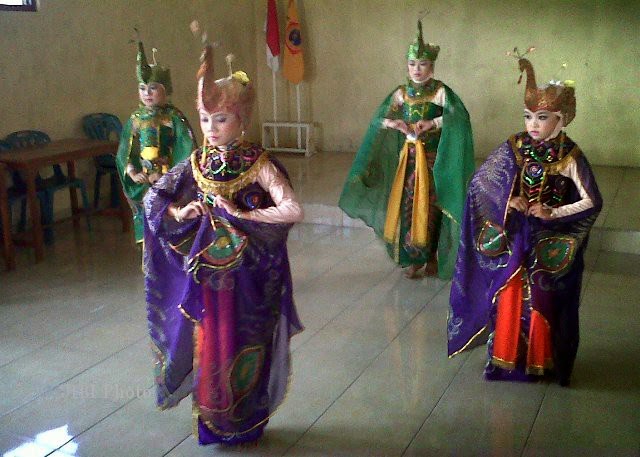Peacock Dance is a dance variety of new creations that express the life of the animal, which is a peacock. The procedure and its motion is taken from the life of a peacock who was appointed to the stage by Sundanese artist Raden Tjetje Somantri.
This peacock dance is one of the original culture of Indonesian art, precisely derived from Tatar pasundan namely West Java.
* History of peacock dance
Peacock Dance is a traditional dance from West Java region, the meaning of this peacock dance movements are in a cheerful and happy, so that the peacock dance is always used as a dance offerings for guests or welcome the groom to get to the aisle, Peacock Dance is a popular dance in Java is a dance area and a new creation of the Land Sundanese, which was created by Prince Tjetjep Somantri in the 1950s, although the dance is performed by female dancers, but in fact this dance portrait of a male peacock behavior in menebatkan charm to the peahen, in this dance illustrated how peafowl effort to attract the attention of a female peacock with tail feathers to show off the beautiful and long, in its efforts to attract peahen, the male will display the charm of the best that there is in him to make the female fascinated and serlangsung until marriage.
1. Types of movement peacock dance
* The types of basic movements are:
- galier (galier is rotating head movement.
- gilek (gilek is shaking his head movement to the right and to the left
* Part hand:
- ukel (ukel is playing the hand movement)
- mud (mud is right and left hand movement driven forward or upward mud (mud is right and left hand movement driven forward or upward by means of alternating).
- slap shoulder (shoulder slap is hand movements patted the shoulder either one hand or two hands and even two hands interchangeably).
- capang is bending the hand movements of the hand).
- nyawang is a hand gesture indicating that're looking at the state of the remote).
- lontang left / right (lontang is hand movements using two hands and moved interchangeably).
* The foot:
- Deku sit (sit Deku are the two legs folded in)
- seser (seser footwork is shifted to the right and left)
- sirig (sirig is footwork wiggle your legs simultaneously).
* Part combined: mincid (mincid is a combined movement of the head, hands, and feet, and in the movement of the hands and feet simultaneously but different pairs That's right hand with your left leg so anything contrary).
Excerpted from: http://aldafadilla.blogspot.com/



.jpg)









0 komentar: